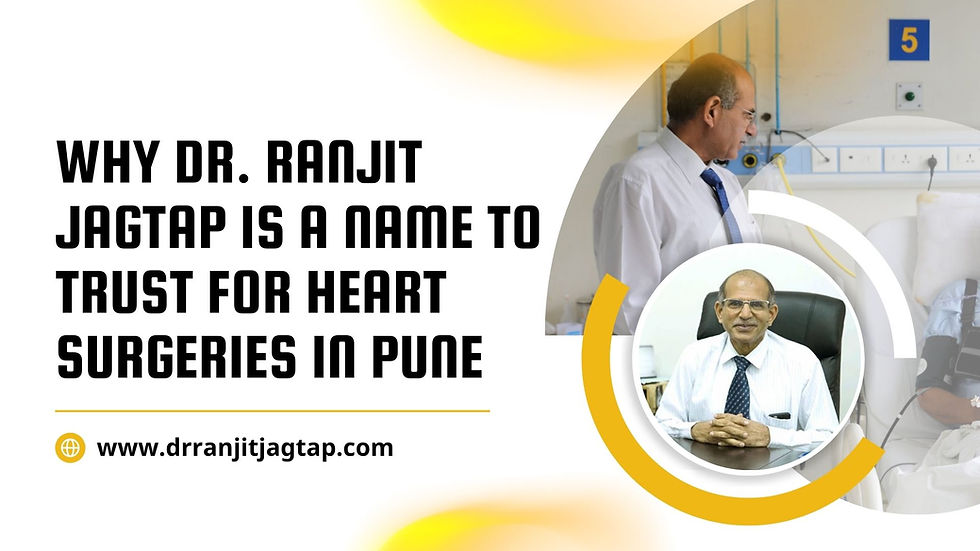Atrial Septal Defect Surgery: repair primum, sinus venosus and coronary sinus atrial defects
- drranjitjagdap
- Oct 14, 2021
- 3 min read
Updated: Jan 3, 2022
The Ram Mangal Heat Foundation founded by Dr Ranjit Jagtap has been working in the cardiac area for many years, and Atrial Septal Defect Surgery is part of that area. The Atrial Septum is a wall that separates the heart's left and right atria (upper chambers). An Atrial Septal Defect is a hole in that wall (ASD). Pure and impure blood can mix together in the presence of this abnormality, causing medical difficulties and arrhythmias.
There is a procedure to close an ASD without the need for open-heart surgery. The surgeon begins by making a small cut in the groyne. The surgeon next threads a wire through a blood vessel that leads to the heart. On the right and left sides of the septum, they implant two small devices which are in the shape of umbrella. These two devices are connected and work together to close the hole in the heart.

ASD can also be treated with open-heart surgery. During this procedure they stitch shut the septum. A patch is another option for covering the hole.
Symptoms
Many newborns with Atrial Septal abnormalities have no symptoms or indicators when they are born. The following are some of the signs and symptoms of an atrial septal defect:
Breathlessness, especially when exercising
Fatigue
Legs, foot, or abdomen swelling
Heart palpitations or missed beats are two examples of heart palpitations.
Stroke
When should you see a doctor?
If you or your kid have any of the following symptoms, see your doctor right once.
Breathing problems
Legs, foot, or abdomen swelling
Heart palpitations or missed beats are two examples of heart palpitations.
With an atrial septal defect, how does the heart work?
According to Dr Ranjit jagtap News, extra blood can overfill the lungs and overwork the right side of the heart if there is a significant atrial septal defect. The right side of the heart progressively enlarges and weakens if it is not addressed. Moreover, pulmonary hypertension is caused by a rise in blood pressure in the lungs.
Atrioventricular septal defects come in a variety of forms, including:
Secundum: This is the most prevalent sort of ASD, and it happens at the middle of the atria's wall (atrial septum).
Primum: There is a link between this defect and other congenital heart defects.
Sinus venosus: It is a type of sinus. Moreover, this uncommon abnormality usually affects the upper half of the atrial septum and it has a link with other congenital cardiac issues as well.
Coronary Sinus: Sinus of the coronary artery Part of the wall between the coronary sinus — which is part of the heart's venous system — and the left atrium is absent in this unusual abnormality.
What are the risk factors?
Although the cause of Atrial Septal abnormalities is unknown, some congenital heart defects appear to run in families and can develop in conjunction with other genetic conditions such as Down syndrome. A genetic counsellor can assess the chances that future children will have a heart defect if you have one or if you have a child who has one.
Rubella infection: It is a contagious disease. Rubella (German measles) infection during the first few months of pregnancy can raise the risk of foetal heart abnormalities.
Use of drugs, tobacco, or alcohol, as well as exposure to specific chemicals: During pregnancy, certain medications, tobacco, alcohol, or narcotics like cocaine might harm the growing foetus.
Lupus or diabetes: If you have diabetes or lupus, you may be more likely to have a baby with a heart problem.
Consider speaking with a genetic counselor or a heart specialist at Dr Ranjit Jagtap Clinic if you have a family history of heart abnormalities or other genetic problems to determine your risk as well as provide you proper treatment.





Comments